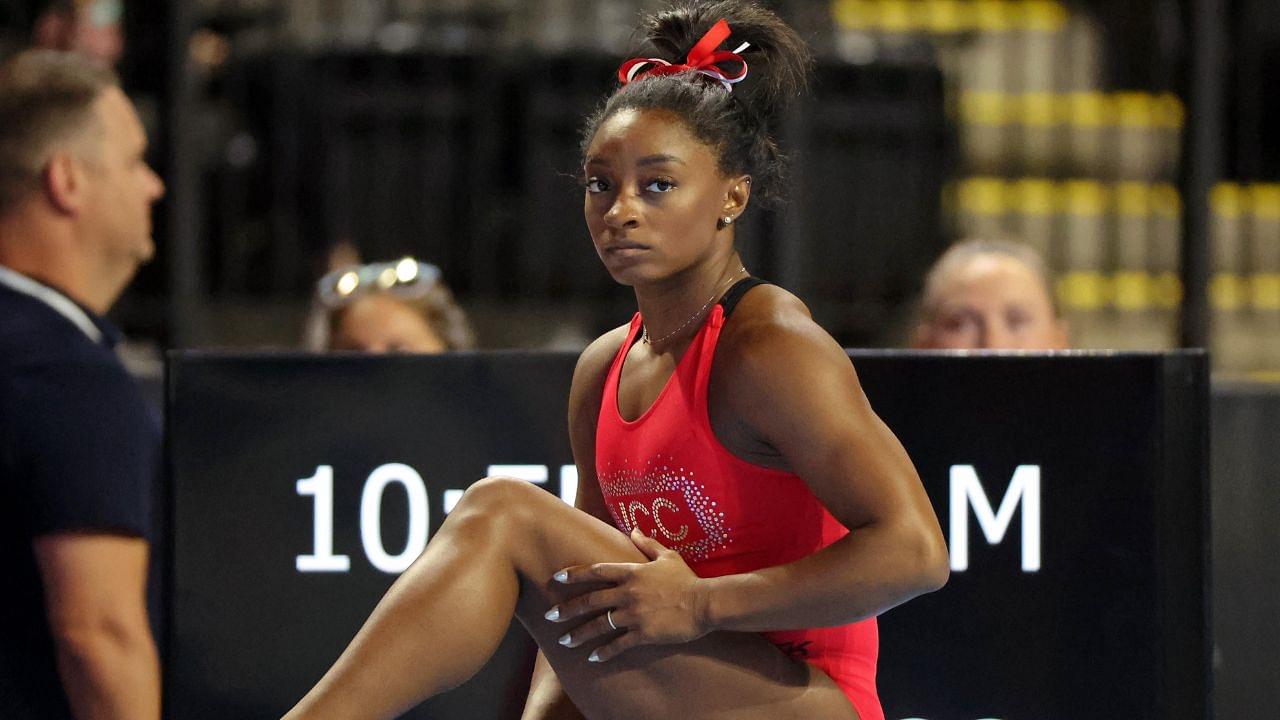Simone Biles has been one of the historic gymnasts of her generation, with her unbelievable skill set and talent. Having five vault moves named after her is a testament to her expertise on the floor and her brilliance in the field. While she’s all prepared for the upcoming Paris Olympics, she recently announced the release of her documentary ‘Simone Biles: Rising’ on Netflix.
The documentary follows her on a journey through the infamous Tokyo Olympics that she chose to part ways with after battling ‘twisties’. Her decision at the time had sparked extreme reactions across the world but also kickstarted a conversation about athletes’ mental health during such occasions.
Featuring some of the older gymnastics legends who stood by Biles’ side, understanding exactly what she went through, Betty Okino, Dominique Dawes, and Dr. Onnie Willis Rogers, shed some light on the situation. The three women had gone through various gymnastics championships and the Olympics at a time when one couldn’t back out under extreme situations.
Okino, who had sustained a severe injury on her elbow in 1991, chose to compete despite having undergone surgery and facing refusals from the doctors. She recalled how participating in competitions at the time was always on the extremes – either you could and you do it, or you couldn’t and move out of the way.
“And if you don’t break, then that makes you resilient and a champion.”
Dawes echoed a similar response to the situation, recalling how all athletes just followed what their seniors told them because they had no other option. Gymnasts, especially, were just kids at the time who had several mentors and trainers who pushed them to the brink, spreading the idea that one didn’t get to be an Olympic champion without pain and sweat.
“They thought that is what it takes to build an Olympic champion, or to build a college-scholarship athlete. And I will say, that is how you rip down a human being.”
The conversation led to the poignant case of Kerri Strug at the 1996 Olympics, when she continued to battle on the bars and beams despite sustaining an ankle injury. Biles‘ decision at the Tokyo Olympics stood as a stark contrast to Strug’s performance, as people couldn’t help but question – how far should an athlete go for a medal.
Simone Biles, meanwhile, felt like she was in jail for her decision
After preparing for five years for the biggest moment of her life, Biles recalled in the documentary how her decision was a blow to herself first. Twisties meant a mismatch in brain-body coordination, which is crucial for a gymnast to perform tricks.
With Biles not being able to pull off her spins in the air during the Olympics, this couldn’t lead to favorable results. If anything, she knew she’d be injured if she attempted to do her moves on the vault.
However, after making the decision, she felt the weight of it all bringing her down as the news began spreading in the arena. Several, who expected her to shine bright, expressed confusion at her sudden change of mind. Meanwhile, Biles felt guilty about giving up, and while she knew it was the right thing to do, she recalled how she felt like she was in jail.





